-

Corporate Wellness Manual
Everybody in the world desires peace, happiness and love. The ways and means to arrive at it may be different for different religions or cultures. According to Indian sage Patanjali, founder of Ashtnag yog or Raj yog, the first sutra mentioned in his scripture is ‘Yogasch Chit Vritti Nirodha’. It means if we are able to control our desires, we will achieve yog. We will be at perfect peace and enjoy eternal happiness...
Read Book -

Matrika Shakti Vilas
Prior to creation, there was nothing, everything was at rest. This space was called Mahashunya or Paramshunya. In this state of equanimity, Shiv, the great intelligence was in perfect balance with its counterpart dynamic form referred to as Shakti. They were so closely associated with each other that it was difficult to differentiate them like warf and weft ( ताना बाना) in a fine cloth. They were present like a supreme...
Read Book -

Sage Guide
For serious practitioners and guides, a collection of different kinds of instructional, easy to follow Yog-Nidra details are given for practical purposes progressing from level-I to Level-III respectively. Also some practical information for tantra sadhaks is also provided under a separate section which one feels will be very useful for followers of Tantra. In the end, some Sanskrit prayer and slokas are also...
Read Book -

Shri Baglamukhi
Bagalamukhi is the 8th Mahavidya. She brings one’s enemies to a standstill and silences all opposition, misconceptions and illusions of her devotees. She holds the tongue of the enemy with her left hand and has the club in her right. She is fond of the color yellow as is her complexion, her clothes and among her golden ornaments she wears a yellow crescent moon on her forehead. She appeared in a yellow nectar milk...
Read Book -
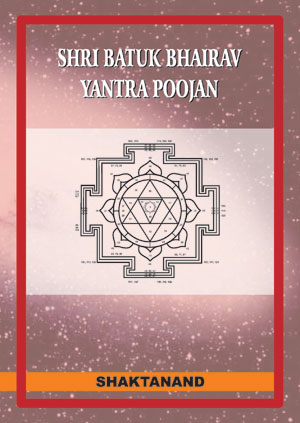
Shri Batuk Bhairav
Bhairav is said to be the one who has fearful form. He ks also the one who creates sustains and dissolves everything. It is one of the form of Shiva. As per tantra, Bhairava himself has eight manifestations i.e. Ashta Bhairava. He is shown wearing ornaments, serpents, earrings, anklets and sacred thread also called Yagyopaveet. When he walks sadhaks hear the sound of his anklets. He wears tiger skin and an apron...
Read Book -
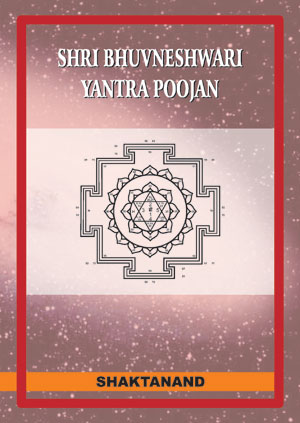
Shri Bhuvneshwari
Bhuvaneshwari’s smiling face has the luster of a thousand rising suns. Her body is the world. She is the queen of the cosmos who pervades all creation and from whom it emerges and, in due course, dissolves. She is also the Mother of Brahma, Vishnu and Shiva and the cause of their representation and functions. During the Mahapralaya (the great cosmic dissolution) this entire movable and immovable...
Read Book -
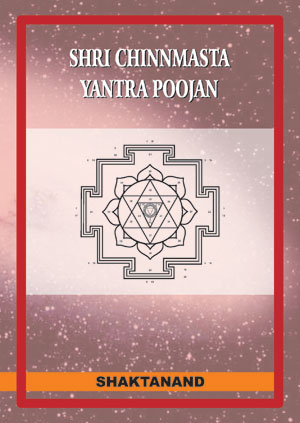
Shri Chinnmasta
Chinnamasta, she whose head is severed from the body, as the ego from the mind, is the only goddess who cuts off her own head in order to quench the thirst and nourishes her Sakhis (friends): Dakini and Varnini, all three nude, and also drinks her own blood. She is a self-decapitated ferocious goddess, holding her head in her left hand and a sword in the right, they all wear necklaces of severed heads. At this time Chinnamasta stands...
Read Book -

Shri Dhoomavati
Dhoomavati is portrayed as an old ugly widow, unsteady, angry and rude. She rides in a chariot hoisting a flag of a crow’s emblem. Her fearsome eyes and wrinkled face have the dark expression of cosmic dissolution. Dressed in rags from the cremation ground she has disheveled hair, is deceitful, nasty and without mercy she frowns. Dhumavati was born out of the smoke of the fire of Sati’s burning body...
Read Book -

Shri Ganesh
The whole creation came out of Agni and Som. Agni represents Shiva while Som/ Ras is represented by Shakti. Whole of the creation is full of Fire and Ras. From Agni /fire comes Ras and with Ras only the fire increases. Fire goes upwards and Ras or Som travels downward. Agni going up transforms to Ras while Ras coming down transforms to Agni. As by coming together of the two, the whole cosmos is created, in the same way from...
Read Book -
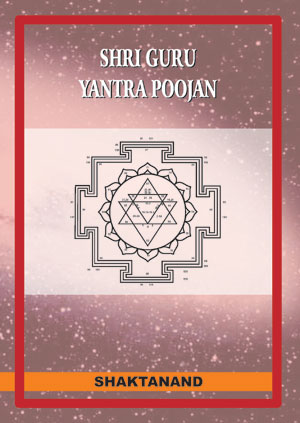
Shri Guru
Guru is made up of two letters Gu and Ru. He is that person which leads us from ignorance to knowledge from darkness to light. All the scriptures have sang praises about the guru. Guru can be in body or in subtle but he always directs the disciple on his evolutionary journey. If one has not completed one's sadhana while in body then after leaving the body, it is said that the Guru provides his realm to the disciple to continue his sadhana...
Read Book -
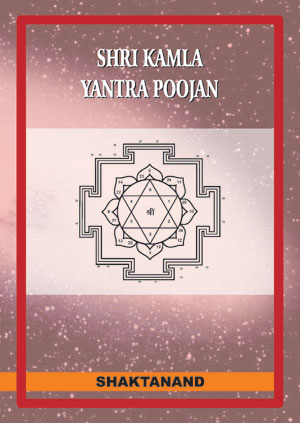
Shri Kamla
Kamala, also known as Lakshmi, is the Mahavidya personification of ‘Shri’, (auspicious). She is identified with royal power, luster, beauty and fortune. She is the goddess of abundance. She has a brilliant golden complexion and is adorned in a queenly fashion with all ornaments. In her four hands she holds two lotuses,(symbols of ‘Shri’) with another hand she gives favours and with the forth she grants fearlessness...
Read Book -

Shri Mahakali
Mahakali, the great goddess consort of Lord Shiva as Mahakala, is the cosmic energy beyond time and death. Durga, Adi Parashakti, become so angry during battle that kali sprang from her forehead as the ultimate deliverer. Wild with loose hair and her tongue hanging out she gulped up all the blood from the blood-born duplicate demons and sucked up all the blood from the original demon Rakta-Bija! Victorious but enraged Kali...
Read Book -
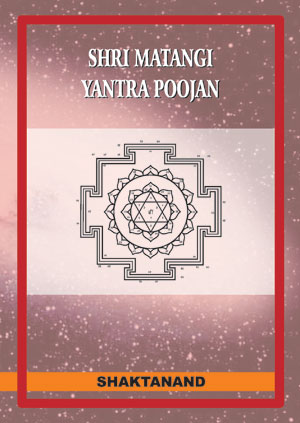
Shri Matangi
Matangi, she who dwells in the forest, is often depicted as sitting on a bejeweled throne with a Veena in her hands and a parrot nearby listening. She is blue, wears red clothes and her ornaments include the bright crescent moon on her forehead. Matangi is seen as a young girl of the age of 16 years, with a narrow waist, abundant round breasts she smilingly plays her instrument. She is a Mahavidya representation of Saraswati...
Read Book -

Shri Tara
Tara Devi of blue hue, four arms and a tiger-skin skirt is seen as a beautiful star but perpetually self-combusting as Ma Tara is perceived as the vital and absolute, unquenchable hunger that propels all life. In Sanskrit her name comes from the root ‘tar’ which means protection. She offers ultimate knowledge and also gives solutions to those actively devoted to her. It is said that after the churning of the...
Read Book -
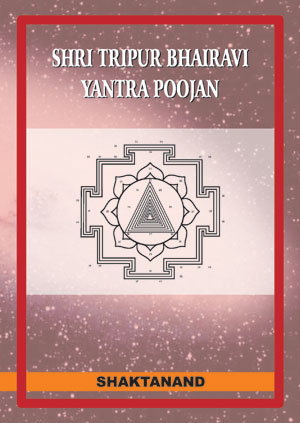
Shri Tripur Bharavi
Tripura Sundari is seen sitting on a lotus coming out of the navel of Shiva, who is lying below her, or as sitting on the lap of Shiva as Kameshwar. They are on a pedestal of four corners supported by Brahma, Vishnu, Rudra and Indra. She emanates an aura of royalty and grace over all. In Shri Vidya she is celebrated as Lalita, Rajeshwari, Kameshwari and Mahatripura Sundari the most magnificent transcendental...
Read Book -

Some Useful Charts (F)
A normal human being, right from the time of birth to the time till death, is affected by a number of things. As per Sanatan Dharma, apart from his karmas of the previous life he is affected by the planets, Nakshatras, by elements throughout his life. Everyone in the universe wants to lead a happy, well provided for and comfortable life. Though everyone seeks it but how many get that? One always finds something...
Read Book -

Tripur Sundari
Mantra-Yantra-Tantra, all three combine together to represent the completeness of any Sadhana. The real meaning of the mantra is represented in the whole cosmos and thatsame meaning is represented in our body too. That is why Brahmrishi Vashishth said, 'Yatha Pinde tatha Brahmande' i.e. as is the body, same is the Cosmos. Crossing the body and the Cosmos one approaches the Bindu which is the coordinator of Yantra...
Read Book -

Yantra Manjari
Without Yantra, Mantra and Tantra Prasad(fruit) of the devta is extremely difficult. Yantra is the gross body of the Devta/divinity. Poojan, Nyas and Mudra etc. are the tantra of the devta. Mantra is the causal body of the devta. Devtas are under the control of Yantra, Tantra and Mantra. Ath Yantram Pravakshayami Devta Suprasadhanam, Yantra Bina Devta Ch Na Prasidati Sarvada. Thus one can say one should perform yantra...
Read Book
